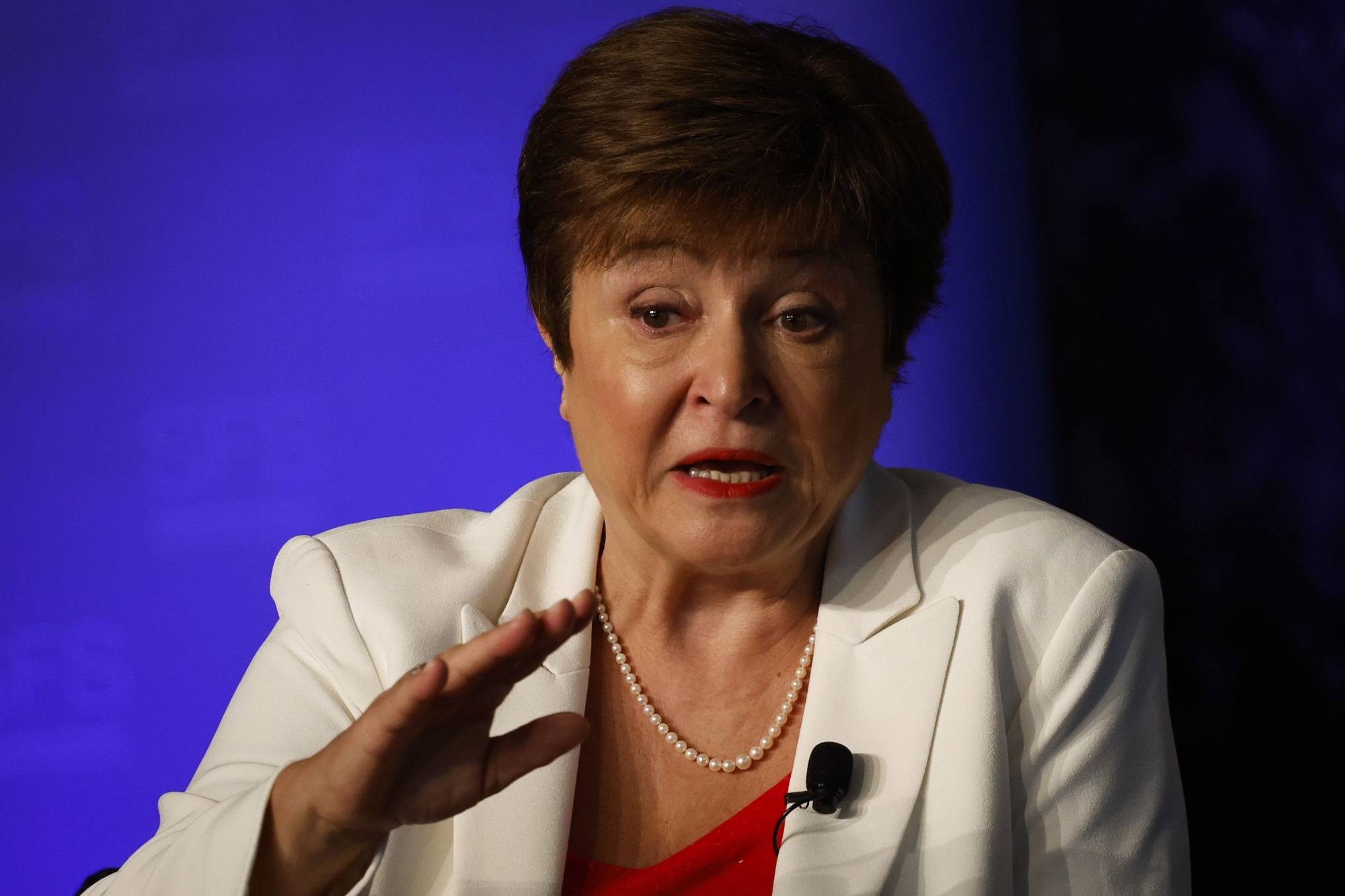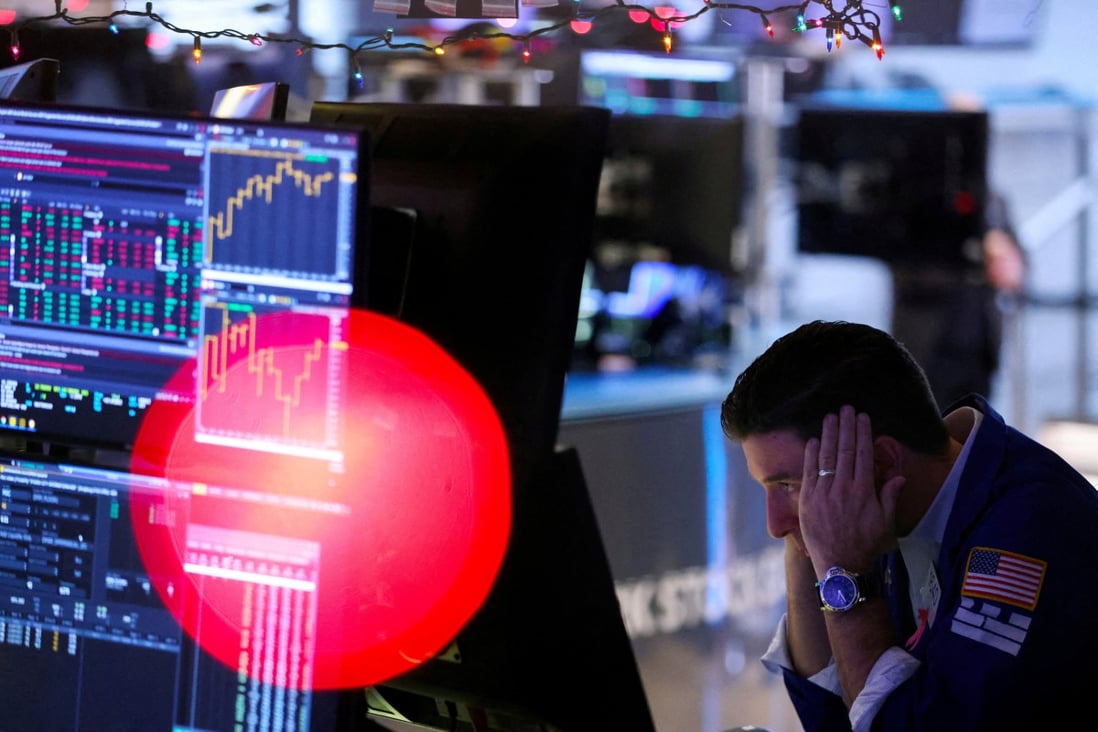Mind you, it’s sometimes difficult to see past the downbeat views from
the major forecasting bodies, such as the World Bank and International
Monetary Fund, which have shifted to more pessimistic outlooks for 2023
global growth.
Global recession? Look forward to a good stock market rally instead
- Are
the gloomy forecasts about the global economy justified? The recovery
of the US, Chinese and European economies, inflation easing and the glut
of liquidity from previous crises should be enough to buoy investment
for years
Updated: 5:45pm, 16 Jan, 2023
"We are in the midst of a full-blown bull market for global stocks. The bottom was reached in mid-October and the outlook for global recovery is much more sanguine than the bears would have you believe.
Global liquidity levels remain high, the appetite for risk is still strong and stocks should have the capacity for at least a further 20 per cent rally this year, on top of the 16 per cent gains already seen in the past three months.
Global recovery is still unwinding from the 2020 Covid-19 crisis and the subsequent 2021 supply-side crunch, leaving considerable scope for a rebound in world trade, considering the pent-up demand for goods and services still being delayed by the pandemic.
The combined force of the US, Chinese and European economies coming back to strength in 2023-2024 should be more than enough of a catalyst for the global stock market rally to extend over the next 2-3 years at least. Global investors should be keen to make up for lost time.
Mind you, it’s sometimes difficult to see past the downbeat views from the major forecasting bodies, such as the World Bank and International Monetary Fund, which have shifted to more pessimistic outlooks for 2023 global growth.
Last week, the World Bank warned that we are perilously close to a global recession, anticipating that growth could drop to as low as 1.7 per cent this year, down from an expected 2.9 per cent in 2022, the third-weakest rate in nearly three decades. . .The Fed’s plan to scale back the wall of money injected into US markets since the 2008 crash under the quantitative easing (QE) programme has had little effect, as the reduction of the Fed’s balance sheet has been fairly marginal so far. . .
We are in the midst of a full-blown bull market for global stocks. The bottom was reached in mid-October and the outlook for global recovery is much more sanguine than the bears would have you believe.
Global liquidity levels remain high, the appetite for risk is still strong and stocks should have the capacity for at least a further 20 per cent rally this year, on top of the 16 per cent gains already seen in the past three months.
Global recovery is still unwinding from the 2020 Covid-19 crisis and the subsequent 2021 supply-side crunch, leaving considerable scope for a rebound in world trade, considering the pent-up demand for goods and services still being delayed by the pandemic.
The combined force of the US, Chinese and European economies coming back to strength in 2023-2024 should be more than enough of a catalyst for the global stock market rally to extend over the next 2-3 years at least. Global investors should be keen to make up for lost time.
Mind you, it’s sometimes difficult to see past the downbeat views from the major forecasting bodies, such as the World Bank and International Monetary Fund, which have shifted to more pessimistic outlooks for 2023 global growth.
Last week, the World Bank warned that we are perilously close to a global recession, anticipating that growth could drop to as low as 1.7 per cent this year, down from an expected 2.9 per cent in 2022, the third-weakest rate in nearly three decades.
Meanwhile, the IMF recently cautioned that up to a third of the world could be in recession this year. It’s a dramatic shift from its customary constructive spins in the face of tough conditions. But is it justified?

Global economic confidence has clearly taken a hard knock from the Ukraine conflict and the subsequent cost-of-living squeeze on the world economy but there are signs that the worst is over, especially as headline inflation rates ease and global energy prices continue to fall.
Global monetary conditions have tightened considerably over the past year, but it seems likely that we are getting closer to the top of the cycle for interest rates, especially in the US. Indeed, the optimism is forcing the Federal Reserve into a rearguard action against money market hopes for lower US rates later this year.
It is very likely that the benchmark Fed funds rate will hit 5 per cent in the next few months, but it is less clear how quickly interest rates might come down thereafter.
US consumer price inflation will be the big indicator, especially with clear signs that headline inflation topped out at 9.1 per cent last June and is already down to 6.5 per cent, based on the December 2022 data. By the Fed’s own forecasts from December’s monetary policy meeting, inflation is expected to average 3.1 per cent this year and fall to 2.5 per cent for 2024.
In other words, the Fed’s 2 per cent target inflation is in sight. No wonder the money markets are jubilant and stock markets are bullish.
The Fed’s plan to scale back the wall of money injected into US markets since the 2008 crash under the quantitative easing (QE) programme has had little effect, as the reduction of the Fed’s balance sheet has been fairly marginal so far.
Likewise, the European Central Bank has delayed plans to offload QE assets from its balance sheet until March. The glut of easy money and credit accumulated through global crises over the past 15 years have left global markets with more than enough liquidity to fund investment, speculation and trading activity for years.
With the prospect of the worst of the inflation crisis ending in 2023, interest rates topping out soon and the downturn in global economic confidence close to bottoming out, it’s no surprise investors are reading more positive writing on the wall and increasing their exposure to equities and risk assets.
Doing nothing or playing it safe is not an option after the disastrous run for stocks in 2022. For those investors who can see through the murky conditions and trust their instincts on recovery, 2023 looks like it will bear fruit.
David Brown is the chief executive of New View Economics


No comments:
Post a Comment